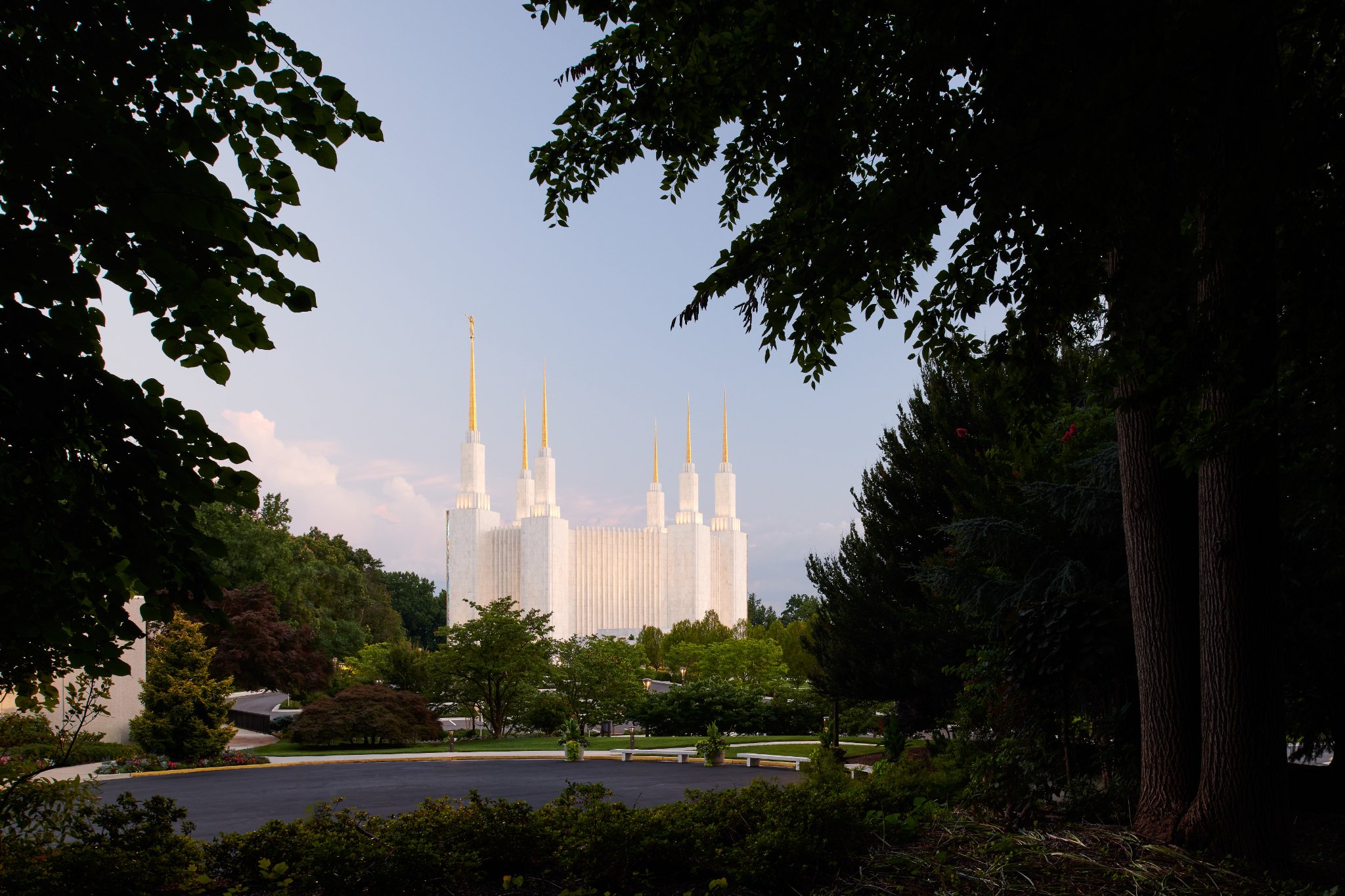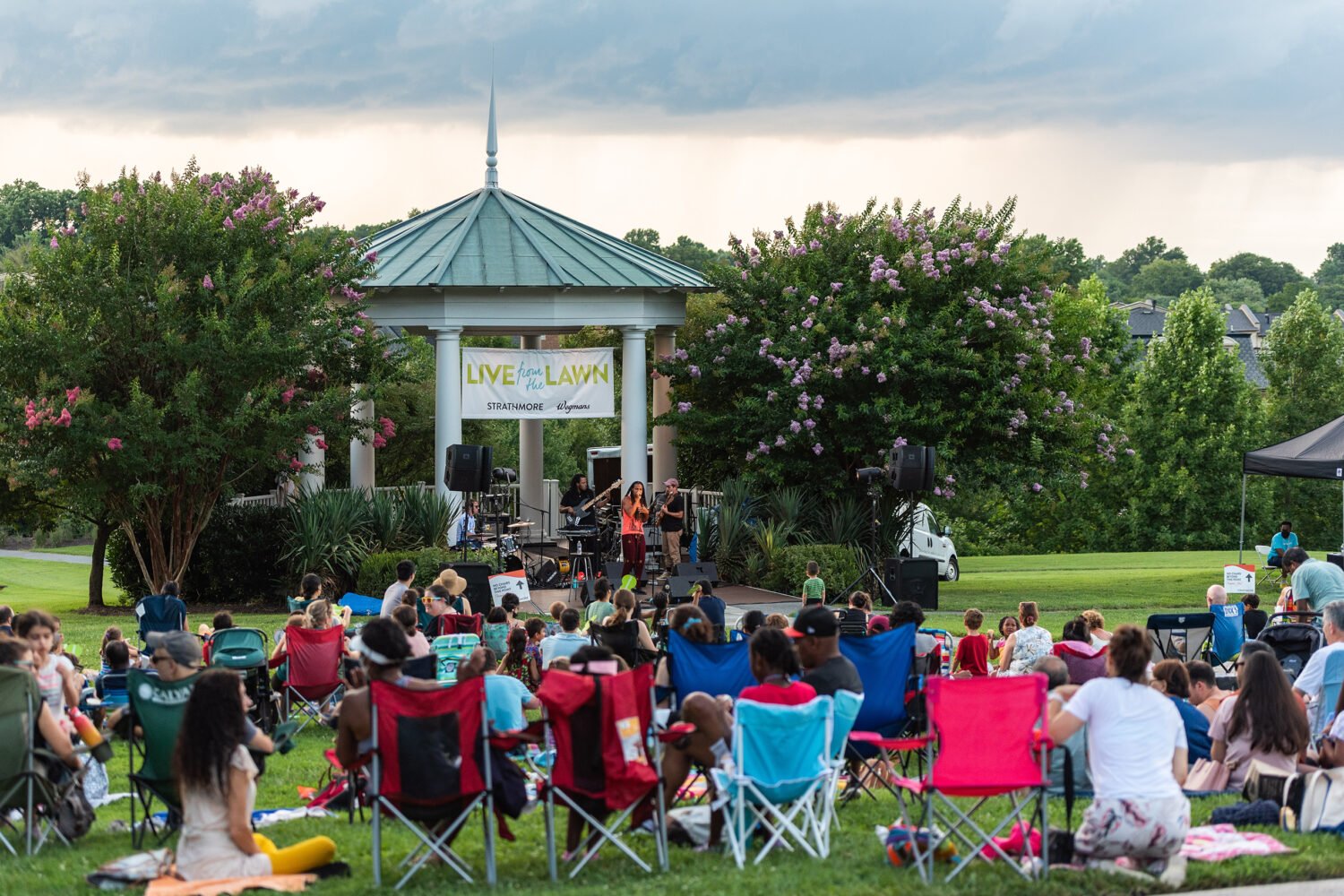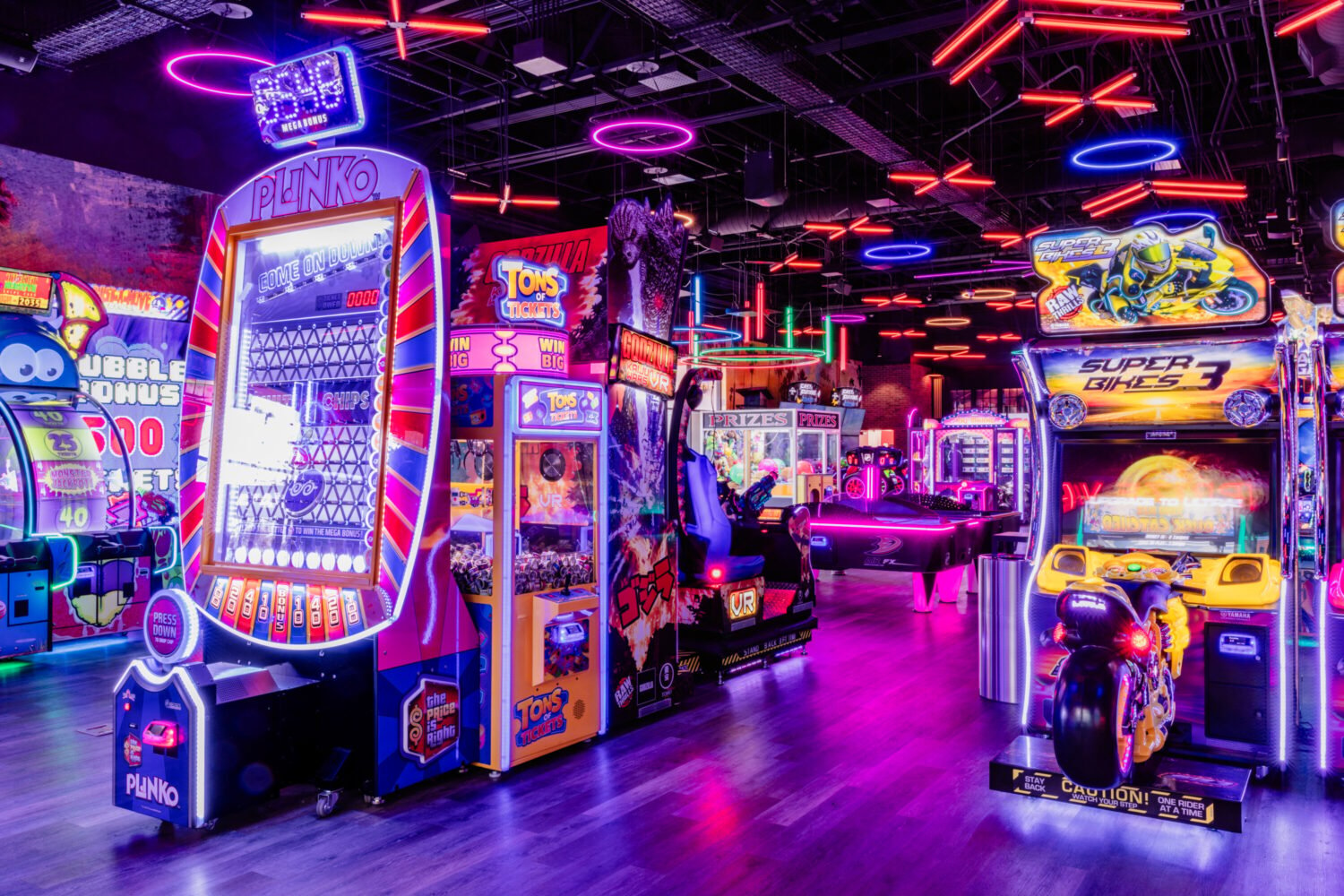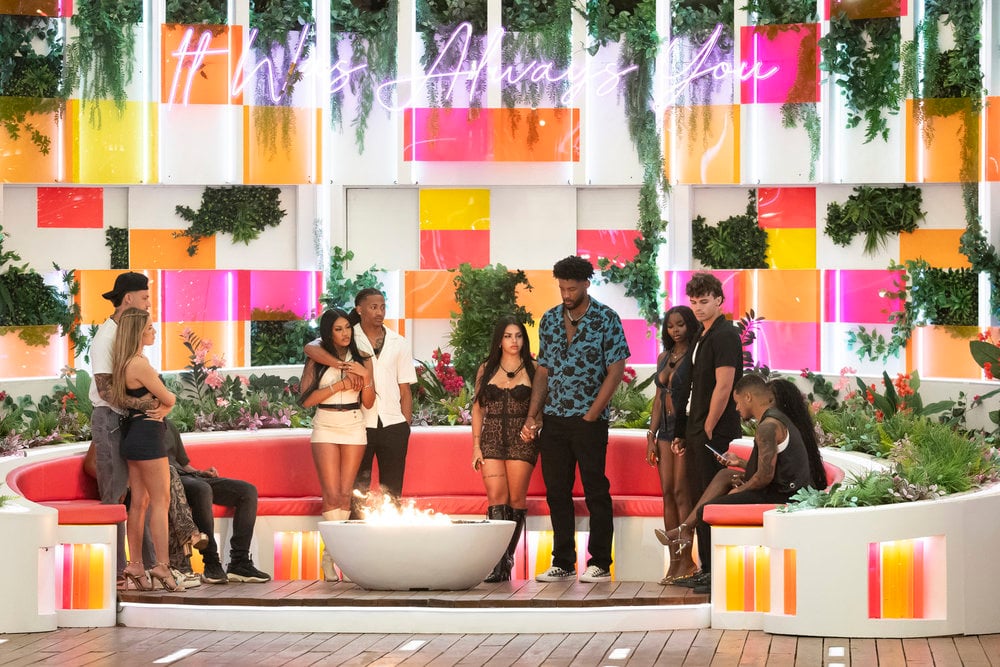It’s hard to miss when cruising down the Capitol Beltway in Maryland. Its six golden spires rise from the horizon like the Emerald City in the Wizard of Oz, while its towering white marble is reminiscent of Disneyland. But it’s not an amusement park nor a storybook city—it’s the area’s Church of Jesus Christ of Latter-day Saints, although you most likely know it as “the Mormon Temple” (a nickname the church discourages using).
“Since 1974, this incredible temple, with its beautiful towering spires, has been an iconic landmark in the Maryland skyline,” said Maryland Governor Larry Hogan during a press conference at the temple’s visitor center on Monday.
Yet it’s also a landmark that’s been sealed off to the public for nearly 50 years. No one from outside the church has seen its interior since it first opened in 1974, when more than 750,000 people toured the 156,558-square-foot building.
But starting April 28, that stringent rule will be relaxed, if only temporarily. After closing for renovations in March 2018, the temple is, for the second time in its history, allowing the public to tour its halls for the next few months. Once rededicated as a holy site on August 14, it will become sealed off to the public once again.
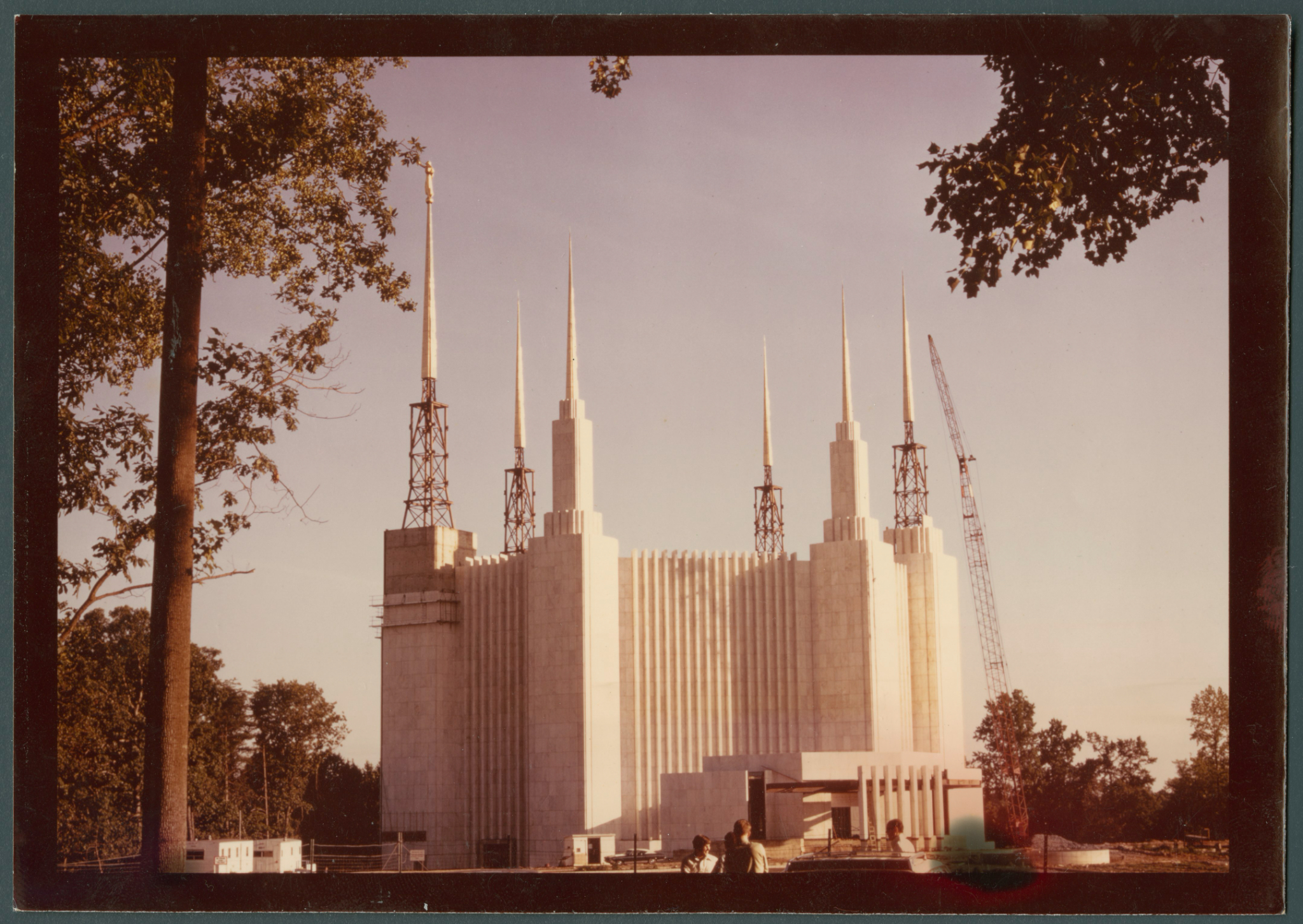
Latter-day Saints consider temples to be among the most sacred spaces in the world, according to Sister Reyna I. Aburto, second counselor of the Relief Society, an LDS philanthropic organization. “It’s not that we want to keep people out, it’s just that it takes a special journey to be here. . . .What happens in the temple is not secret but sacred,” said Aburto.
Whether you see the temple as secret or sacred, now is likely your only chance to see its interiors—that is, unless you convert (and, even then, it would probably take a year or more before you’re allowed in, said temple historian and LDS member Emily Utt).
Originally designed by Fred L. Markham, Harold K. Beecher, Henry P. Fetzer, and Keith Wilcox, the temple’s interiors and exteriors haven’t noticeably changed since the renovations, which focused mostly on mechanical and electrical needs. “The vast majority of people that come here will think that we just replaced the carpet,” Utt said. “The changes are really subtle.”
She explained that the temple’s modern six-spire design was built in the image of the Salt Lake City temple, so that it’d be recognizable as an LDS building. The Church of Jesus Christ of Latter-day Saints has been building temples since the 1830s, she says, and thus far the DC temple is the tallest of the 173 temples worldwide, with its easternmost spire, holding the Book of Mormon prophet Moroni, measuring in at 288 feet.
The entire temple, exterior and interior, is designed to pull your eyes upward, from its towering white marble, quarried in Sylacauga, Alabama, to its countless arch motifs. “The verticality is a reminder that we’re moving spiritually,” said Gerrit W. Gong, a sustained member of the Quorum of the Twelve Apostles. The temple’s stained glass also becomes lighter and more translucent as you climb the building’s seven stories, “pulling you heavenward,” said Gong, adding that each tiny piece of the windows was removed and polished as part of the renovation.

The stained-glass windows aren’t the only eye-catching pieces: Swarovski-crystal light fixtures feature prominently throughout the temple, and more than 200 religious and pastoral paintings adorn walls decorated with gold-leaf line work.
Gong repeatedly compares entering the temple to “crossing a bridge” from the earthly outside to the heavenly inside. Emphasizing his point alone is the color scheme of the temple’s interior. In sharp contrast to the verdant green lawn with its vibrant floral gardens, the inside of the temple is almost exclusively white, cream, and sage, with soft hues of blue here and there.
Church members change into all-white clothing once inside, using designated dressing rooms (that the tour will walk you through), which look a bit like ornate locker rooms. “When we cross into the temple, we symbolically cross a bridge that reminds us that we’re separating from worldy cares, issues, and concerns,” said Gong.

In addition to the dressing rooms, a tour of the temple takes you through several other ceremonial rooms—many of which are small and meant for extremely intimate, somewhat-secret occasions, such as the “sealing rooms” where couples become married and, thus, “sealed together for eternity,” according to LDS faith.
Inside the baptismal room, 12 sculpted oxen, representing the 12 tribes of Israel, form the base of a central font, in which LDS members perform proxy baptisms for their ancestors. “The baptisms here are not for those who are living, but for those who have passed away and didn’t have the opportunity to be baptized,” explained Gong.

Among other rooms, the tour also takes guests through the temple’s high-ceilinged celestial room. Meant to evoke images of heaven, the room is a designated space for silent contemplation, in which you listen to your “deep heart’s core,” said Gong, referencing a W.B. Yeats poem.

In the coming months, the church hopes its tours will demystify LDS practices for the public. While the tours are free and don’t require reserved tickets, parking spots are limited and must be reserved in advance at dctemple.org. Visitors can also reserve tickets to ride a shuttle bus from the Forest Glen Metro Station on weekday evenings and Saturdays.
“This is as much our temple as it is the community’s temple, and this is a wonderful moment for us to just throw open the doors,” said Utt. “Everyone has driven past this building for 50 years wondering ‘What goes on in there?’ Well, come check it out.”

